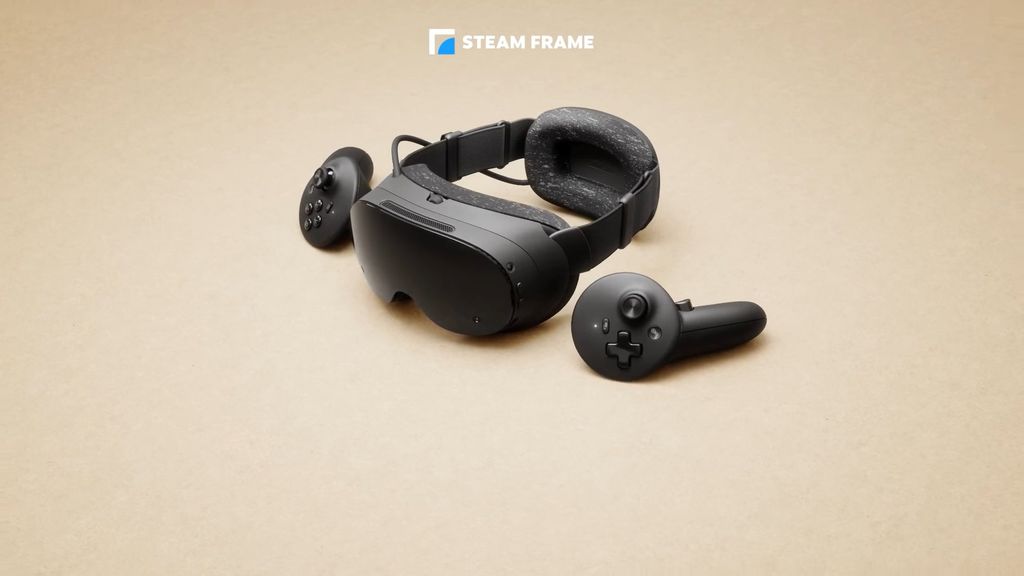
Valve is back in the fight for VR. The Steam Frame – new goggles set to hit the market in early 2026 – are meant to be a response to the Meta Quest 3 and a new approach to VR within the Steam ecosystem. The headset works both standalone and wirelessly connects to PC, offering access to thousands of VR games already available on Steam. The only issue is that there’s one problem: the displays are still HD, without HDR and no local dimming, so the image quality remains far behind the Vision Pro or Galaxy XR.
Powerful hardware, huge ecosystem… and LCD like from years ago
Valve emphasises that ChooseTV Frame is set to give a new boost to the VR market and it truly looks promising. The headset operates on the Snapdragon 8 Gen 3, which is over 2× faster than XR2 Gen 2 from Meta Quest 3. This means that some VR games will be able to run locally – without a PC.
At the same time, users get the biggest advantage that neither Meta, nor Samsung, nor Apple has: the full Steam library. Games can be streamed from a PC using a dedicated 6 GHz adapter, which focuses the transfer where we are looking – thanks to foveated streaming and eye tracking.
Importantly – the goggles cannot be connected by cable. No wires at all. Additionally, SteamOS (on ARM) makes it easier to port applications and expands the ecosystem to include non-gaming applications. However, Valve makes it clear: this is not an XR headset. Passthrough only works in black and white, is basic, and will not replace mixed reality like Vision Pro.
Displays: disappointment
And here we come to the biggest downside. The Steam Frame uses two 2160×2160 LCDs per eye, with no HDR, no local dimming, and no OLED depth.
This is "HD VR" level, similar to the Meta Quest 3. In VR, this means:
lower contrast,
poorer immersion,
visible pixel grid,
lack of the "wow" effect that the Vision Pro or Galaxy XR achieve with 4K micro-OLED panels.
Refresh rates range from 72 to 144 Hz, although 144 Hz is experimental.
Lightweight, modular, and painfully gaming
Weight: 440 g, which is lighter than many competitors.
Additionally, a modular headstrap with:
3D speakers,
battery at the back (21.6 Wh),
the option to swap for other straps.
Steam Frame also includes:
inside-out tracking,
four monochrome cameras,
two eye sensors,
Wi-Fi 7, Bluetooth 5.3,
expansion port (8-lane MIPI camera or PCIe 4.0).
The set also includes new controllers: Steam Controllers VR. Price? Unknown, but it's expected to be lower than Valve Index.
Valve Steam Frame – full specification (AU)
Processor: Snapdragon 8 Gen 3 (4 nm, ARM64)
RAM: 16 GB LPDDR5X
Storage: 256 GB / 1 TB UFS + microSD
Battery: 21.6 Wh, USB-C 45W
Displays: 2160×2160 LCD (per eye), 72–144Hz
Lenses: Pancake, FOV up to 110°
Tracking: Inside-out + eye-tracking
Cameras: 4 external mono + 2 internal
Passthrough: black and white
Connectivity: Wi-Fi 7, Wi-Fi 6E adapter, Bluetooth 5.3
Audio: speakers in the band, 2× microphones
Weight: 440 g (with strap), 185 g module only
OS: SteamOS 3, KDE Plasma
Who will win?
Steam Frame may not be pushing VR technology forward – Apple and Samsung are already in another world of image quality.
But Valve is doing something smarter:
it offers full Steam in VR goggles,
a gigantic library of games,
powerful hardware,
low price (probably),
premium wireless streaming.
This could be the first VR headset to truly reach the masses, even if it’s not the best. And the Index officially goes into history.
 Katarzyna Petru
Katarzyna Petru












